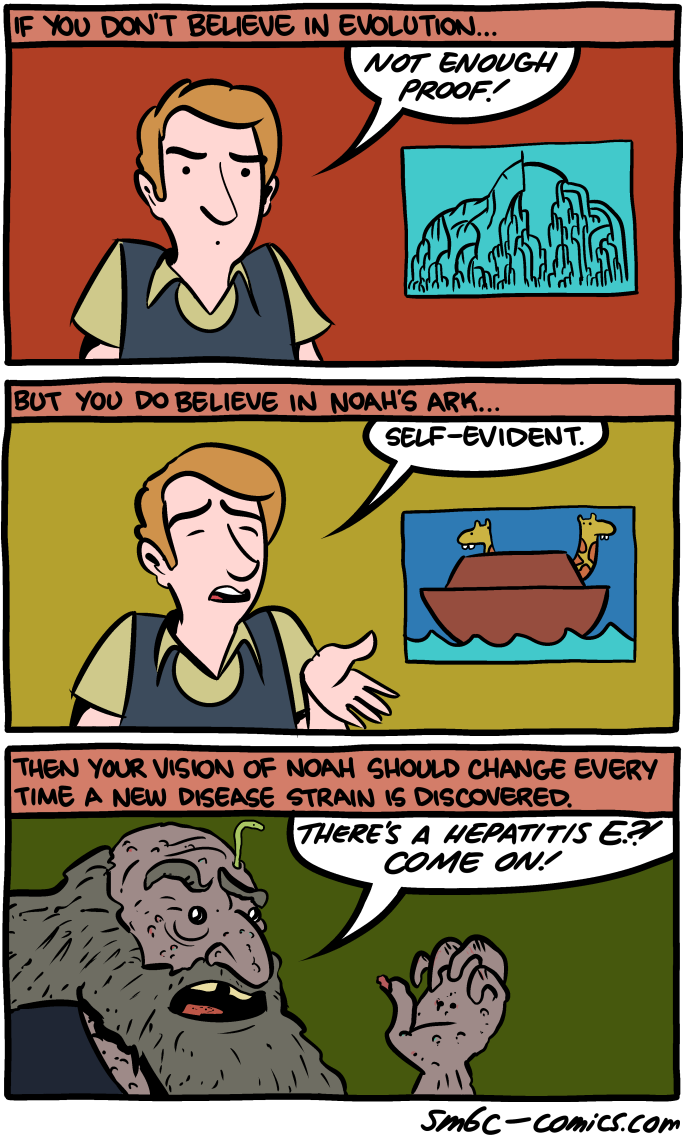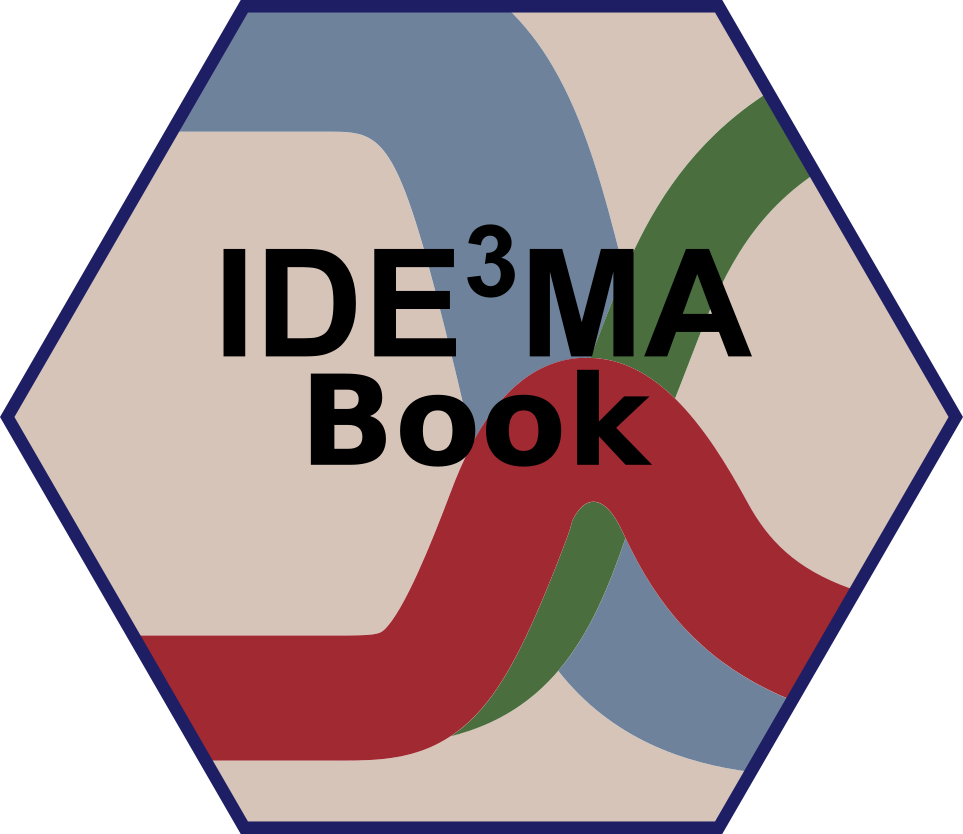Chapter 15 Evolutionary Dynamics Introduction
15.1 Overview and Learning Objectives
In this chapter, we will take a look at the evolutionary dynamics of infectious diseases.
The learning objectives for this chapter are:
- Understand the central mechanisms and drivers of infectious disease evolution
- Be able to assess how different control strategies can affect infectious disease evolution
15.2 Introduction
Evolution is based on the generation of diversity, usually genetic diversity through mutations and the subsequent increase or decrease in certain genetic variants through selection or random drift. Microorganisms, especially viruses, tend to undergo rapid evolutionary change. High mutation rates and large population sizes provide many opportunities for the generation of genotypic and phenotypic diversity. Short generation times and fluctuations in population size (e.g., through transmission bottlenecks) allow selection to quickly act on this diversity, amplifying those mutants that have a fitness advantage and eliminating those with low fitness. These features of microbial populations often lead to rapid evolutionary changes. Such evolutionary change can become a public health problem.
15.3 Basics of Evolutionary dynamics
Two main mechanisms underly evolutionary dynamics: First, diversity needs to be generated.
Second, newly created mutants undergo selection. Depending on the phenotype of the mutant and the environment, it might be more or less fit than the wild-type (e.g. grow better inside a host or transmit better between hosts). Depending on this fitness
Another process is drift. Even if a mutant has lowe or higher fitness than the wild-type.
These two processes are often labeled ‘mutation’ and ‘selection.’ In that terminology, mutation includes processes such as point mutation, recombination, etc.
The mutation process is generally stochastic, new mutants are generated at random. For most organisms, this also occurs at a fixed rate, independent of the setting. An exception are some bacteria that are thought to be able to increase generation of new mutants in response to environmental factors REFS.
The selection process is potentially less random and more predictable.
In general (apart from the possible phenomenon of drug-induced hypermutation in bacteria), the generation of genetic variants is not influenced by any human intervention. Those mutants are constantly produced. In the usual setting, most mutants are less fit than the wild-type strain and therefore are outcompeted. If not, they replace the current strain and become the new wild-type.
15.4 Evolution and Immune Escape
A powerful driver of evolution is the host immune response. If an ID induces a strong immune response which subsequently protects the host from re-infection, a mutant of the ID which can partially escape the host immunity and infect a host will have a large fitness advantage. This is the process which drives the continuous evolution of influenza in humans. It is likely also the driver for changes in many other diseases, especially viruses. Why some pathogens do not seem to evolve much to circumvent immune response (measles is a good example) is not quite clear, though some studies have speculated on that topic (Steven A. Frank and Bush 2007; Lange and Ferguson 2009).
15.5 Modeling Evolutionary Dynamics
To study evolutionary dynamics, we will need to implement models that allow for changes in the system on top of the non-evolutionary dynamics of the ID. Unless we plan to model many different potential new variants, it is often easiest to pre-specify the number of variants we want to track. In the simplest form where we only track pathogen evolution, we might model the wild-type (normal, pre-existing) form of the pathogen and a single mutant that is different in some important characteristic, e.g., resistant to a drug or able to evade a vaccine. We would build a model with these compartments. We often also pre-specify the characteristics (i.e., the parameter values) for both the wild-type and mutant. We implement the process of mutant generation in the model and run the simulation. Under certain circumstances, we might see the mutant be generated and take over the population.
If we want to model many different mutants, maybe allowing for random, not pre-specified, differences in their fitness, and perhaps even allowing for host evolution, the models get quite a bit more complicated. They are not necessarily conceptually harder, but there is more bookkeeping and coding involved making it technically trickier.
15.6 Co-evolution
While the hosts infected by ID also evolve, this usually happens on much slower time-scales. As such, studying evolution by assuming only the ID evolves and not the host is often a good approximation. However, there are examples where host evolution needs to be considered. A good example is the introduction of myxoma virus to control Australian rabbit populations. Evolution of both the virus and rabbits was observed. Over longer time-scales, features such as sickle cell anemia, which comes from a mutation that is associated with reduced malaria morbidity, is likely a trait some humans evolved in response to malaria. A discussion of genetic characteristics in humans that might be attributable to evolution in response to specific infectious diseases is provided in (Pittman et al. 2016).
15.7 Summary and Cartoon
This module provides a brief discussion of ID-evolution, especially concerning ID control.

Even if one believes that pathogens evolve (at a high rate), most human-only pathogens could have only survived a recent worldwide flood such as the one described in Genesis by living on/in the surviving humans. Source: smbc-comics.com (http://www.smbc-comics.com/)
15.8 Exercises
- The Evolutionary dynamics app in the DSAIDE package provides hands-on computer exercises for this chapter.
- Read the article ‘Evolutionary epidemiology 20 years on: Challenges and prospects’ by Restif. The paper talks about 3 evolutionary patterns that are important to ID control. Find one or several papers that have been published in the last 5 years which address ID control from an evolutionary perspective of one or more of those topics mentioned in the Restif paper. Summarize and discuss the paper(s) you found. Critically assess the feasibility of the ideas put forward.
15.9 Further Resources
- The references mentioned in this chapter provide further information on specific topics.
- Some clever ideas to fight and prevent drug resistance have recently been proposed, see (Baym, Stone, and Kishony 2016).
- The interaction of co-infection (discussed in a previous chapter) and drug resistance is discussed in (Birger et al. 2015).
- One of the primary goals in ID research is to be able to forecast the dynamics of ID, both on short and long timescales (similar to weather and climate forecasts). A review and discussion of that topic are in (Gandon et al. 2016).
